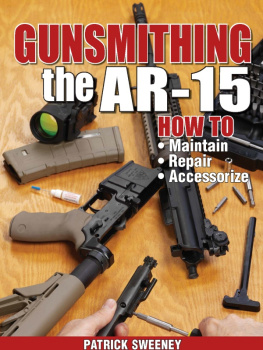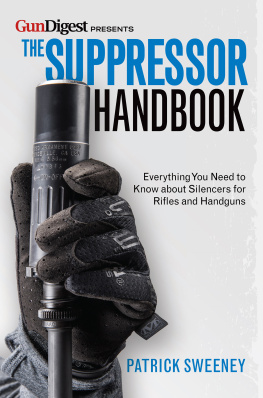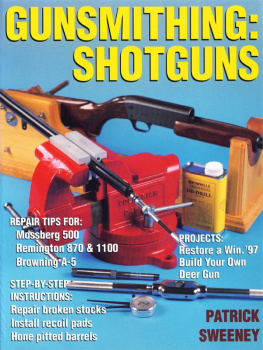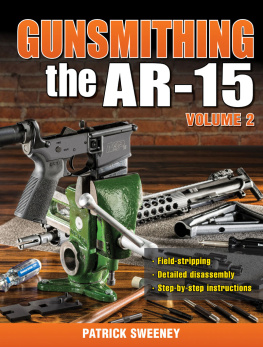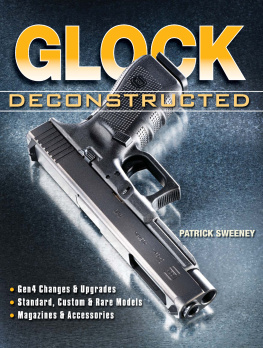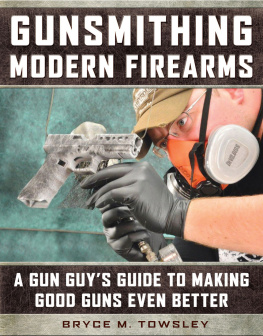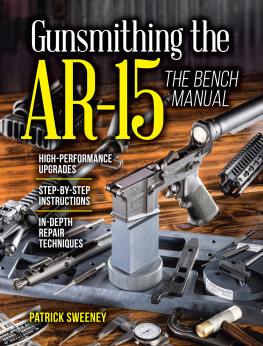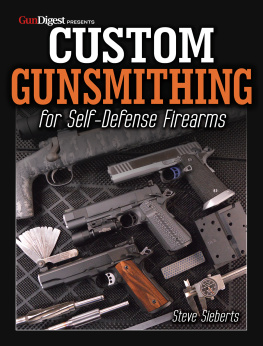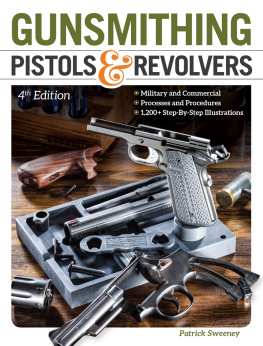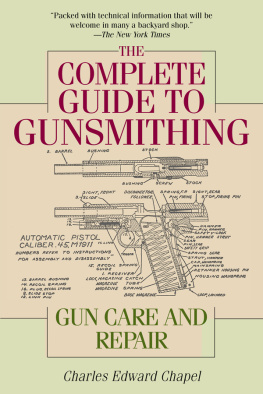Thank you for purchasing this Gun Digest eBook.
Sign up for our newsletter and receive special offers, access to free content, and information on the latest new releases and must-have firearms resources! Plus, receive a coupon code to use on your first purchase from GunDigestStore.com for signing up.
or visit us online to sign up at
http://gundigest.com/ebook-promo
TABLE OF CONTENTS
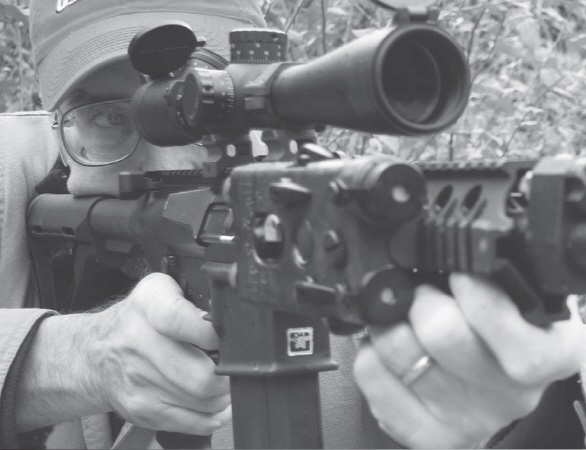
INTRODUCTION
T he AR-15/M-16 has been the service rifle of our armed forces for over 45 years. As a record, it is surpassed by only a few firearms: the 1911, for one, from 1911 to 1985; the M2HB, or .50 machinegun, from 1919 to the present. (I cant help but point out both were designed by John Moses Browning.) In most of that time, it has been hounded with a reputation of inaccuracy, unreliability, and lack of power. Well, the power thing may or may not be true, depending on just what your threshold of enough power may be. While the reports of skinnies taking multiple hits in Somalia is one source (and I am not prepared to argue the veracity of those reports) for the most part the lack of power in many instances is exaggerated but one made partially true because of the military selection of the M-855 green tip bullet, which most of us are not stuck with.
Here, instead of history (although youll get a good dollop of that) we are going to study just the selection and assembly of the rifle itself. Why selection? Because simply bolting on parts isnt enough. You have to know which ones, why and which ones, why not.
I learned the AR-15 on my own. I had lost some 3-gun matches while shooting .30 caliber rifles in the prehistoric days of IPSC, and I decided losing sucked. One I lost while using my match-conditioned Garand. It was the old-format Light Rifle Pop and Flop, from the Second Chance shoot. You had to run downrange and set 15 pins on their stands, then run back, load and shoot. Fastest time won. dropped 15 pins with 16 shots, and came in third. The winner used a Universal Carbine (gack) with a telescoping wire paratrooper stock (double-gack) a cheap scope in a side mount (triple-gack) and two 30-round magazines in a jungle clip. He shot so much he reloaded and still trounced my time. So, I acquired an AR, learned how they worked (I was a gunsmith then) and started building, adding to my collection, and modifying them. Until the AR was up and running, I lost a few club matches, getting my butt handed to me by people not using a manly rifle.
In the late 1980s, we had an assault weapons scare. Lots of guys were buying lots of parts and trying to put their own rifles together. A lot found it to be too much. I gained a reputation as a guy who could make an AR run and soon had a steady stream of un-working ARs coming in. I got good enough at it that I charged a flat fee: as long as you hadnt drilled or reamed anything, Id make sure it was put together correctly, and test-fired it to make sure. Busted/modified parts cost you extra. Weve had other assault weapons scares since, and although I havent been at the shop during those, Id bet much the same thing happened. I hope whoever was there to re-build rifles did as good a job as I did.
A long time later I took an official, certified AR-15/M-16 armorers course and nearly fell asleep during it. While it was informative, Id rather have another root canal than go through those two days again.
A two or three-day class is both too much and too little time in which to learn all there is to know about the AR-15, either using or fixing. For all of its apparent complexity, stripping the AR-15 to its basic component assemblies can be learned, like the Glock, in half a day. Learning to precisely fit all those parts together when they come in a box takes a at least a couple of days. Learning how to fit them all when some might not be mil-spec, some might be out-of-spec, and have to be custom-fitted well, that could take a couple of weeks.
I teach AR-15/M-16 armorers classes, along with my good friends Jeff Chudwin and Ned Christiansen. In the class, the instruction sometimes becomes more a stream-of-consciousness than a rigidly followed lesson plan. In the give-and-take of a class, some issues can need more attention than others. If everyone already knows a subject, and a few questions makes that clear, we move on. Also, there is more than can be done in two days.
The classes we taught in the beginning started out as a means of teaching the use of a relatively new subject: patrol rifle. They then expanded to an instructors class. A few years ago, in response to demand from departments and officers, we started teaching the armorers classes.
We had been so successful in spreading the gospel of the rifle to law enforcement that there were now many departments with rifles. And not enough people who knew how to keep them running.
Worse, they didnt have the knowledge and certification status to properly advise their superiors on the subject. Its one thing to know the Chief is getting bad advice, because you know the subject. It is another thing entirely to be able to tell the Chief, Thats not a good idea, we covered that in the State-certified armorers course. Instead, this works.
It is an inescapable fact of life that an opinion backed by a certificate or title means more than one without, even if both are correct.
This book will contain more information that I or anyone can teach in the time allotted in a two or three-day course. It has more background than classroom time permits to explain or discuss. And some things have been left out, things that we go into in the LEO classes. A departmental armorer will have to work on what the department owns. If that is a rack full of government-supplied M-16A1 rifles, then he/she has to know how to run them. If the Chief/ Sheriff/Commissioner decided that what they needed was burst-fire SBRs, then thats what he/she works on.
Yes, some of you will have select-fire or burst-fire rifles. Good for you. Most readers wont, and space I might devote to select-fire issues is space I have to take from something else, something everyone needs or wants. So sorry, you lucky machinegun owners. Im not being an LE elitist, nor deliberately slighting transferable M-16s. I wish I had one, but the $15,000 price tag is just a bit much to swing.
It is in the nature of a book such as this that I will inevitably cover things that a lot of you will already know. And for even more of you, I will be covering things you already know. Im not trying to be a smart-alec here, but there are a lot of things that people know that just arent true. And in the pantheon of things that can hurt you, ignorance is often exceed by things you know that arent true. So, if someone tells you something that contradicts what Ive put down, dont automatically assume that one of of us is wrong. We may actually both be right, but in different circumstances. In cases of a conflict, do your homework. Study the situation. If you want to, do an experiment to solve the problem, but do it in a manner that wont cause harm and decreases the likelihood of damaged parts.
Or just do it my way.
A bit of info to stick in the back of your mind, when considering the AR-15: it was not designed as a rifle, per se. That is, it wasnt designed with the prior idea of rifle parts and assemblies in mind. It was designed to be as much of an industrial product as possible. Thus, it has small springs and pins that are common industrial fasteners. Yes, specific to the dimensions of the AR, but not like the gas system retaining nut on an M-14/M1-A. The industrial philosophy informed the original design, but from there things have changed a bit.

